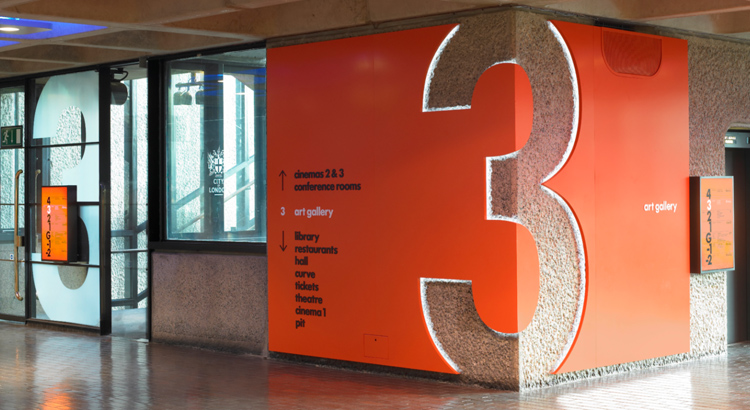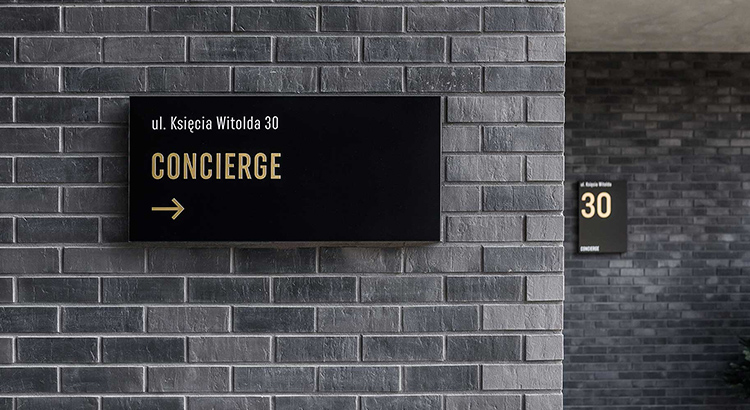Wayfinding signage design is at the crossroads of innovation and functionality in a constantly changing world where urban landscapes are expanding, and digital technology is changing how we navigate the spaces around us. Effective navigation is crucial in guiding people through complicated locations, such as busy airports, large hospitals, or complex shopping malls.
Signage designers and architects are continually challenged in these dynamic times to develop aesthetically beautiful signage and seamlessly incorporate it into the architectural environment. The old concept of static signs is experiencing a tremendous transition as augmented reality, interactive displays, and dynamic mapping systems evolve. Furthermore, as environmental concerns gain prominence, sustainable and eco-friendly materials are becoming critical factors in signage design.
Let’s go further into the ever-changing field of wayfinding signage designs, exploring the creative solutions and trends that are on the verge of changing the future of how we navigate an increasingly complex environment.

EMBRACING DIGITAL INTERACTIVITY
• Interactive Touchscreen Kiosks
Integrating interactive touchscreen kiosks into modern navigational signage is a revolutionary trend transforming how we traverse complex locations. These kiosks provide consumers with an immersive and user-friendly experience, allowing them to receive real-time information and tailored directions with a single touch. These interactive kiosks give a dynamic and efficient approach to locating oneself within their surroundings.
One of the primary benefits of interactive touchscreen kiosks is their adaptability and response. They can be updated in real-time to convey information about changing events, such as gate changes at an airport or room availability in a conference centre. Furthermore, they can provide multi-language support and accessibility features, ensuring that a wide range of users can benefit from their capabilities. As we evaluate the evolving landscape of wayfinding signage design, interactive touchscreen kiosks stand out as a powerful tool that not only improves navigation but also elevates the overall user experience, making it more intuitive and efficient than ever before.
• Augmented Reality Wayfinding
Wayfinding using augmented reality (AR) is a cutting-edge technology that improves orientation and navigation in both indoor and outdoor settings. It makes use of AR’s capabilities to overlay digital information, including directional arrows, labels, and places of interest, into real-world surroundings as seen through a smartphone or AR headset. As it gives users real-time visual clues that direct them to their chosen destinations, this technology is beneficial in challenging and unfamiliar locations like airports, shopping malls, and vast campuses. AR wayfinding makes navigation more effective while also making it more interactive and intuitive, which increases the overall user experience.
The capability of AR navigation to adjust to different user preferences and demands is one of its main benefits. The AR navigation experience may be personalised by users by selecting various display settings, languages, or accessibility features, making it inclusive for people with a variety of needs. In addition, AR navigation offers businesses the chance to give their clients immersive and engaging experiences, which has the potential to change sectors like retail and tourism. We can expect ever more sophisticated and advanced wayfinding solutions as AR technology develops, making navigating even easier and improving how we interact with our physical surroundings.
Integration of Smart Signage
• IoT-enabled Signage
An important development in the realm of digital displays and communication is IoT (Internet of Things)-enabled signage. With the use of this technology, conventional signage can be transformed into intelligent, dynamic, and data-driven communication tools. IoT-enabled signage can change its content and messaging based on changing conditions, audience demographics, and user interactions by combining sensors, connectivity, and real-time data processing. A more individualised purchasing experience can be created, for instance, in a retail setting where these signages can show tailored incentives to customers based on their preferences and purchase history.
IoT-enabled signage can offer businesses and organisations useful data and analytics, which is one of its main advantages. By gathering information on user interactions, foot traffic, and environmental factors, these signs help businesses decide how best to optimise their content, execute their marketing plans, and allocate their resources. IoT-enabled signage can also improve emergency communication by immediately disseminating important information and notifications in response to particular incidents or situations. Individuals can expect even more advanced and context-aware IoT-enabled signage systems that will revolutionise how people communicate and engage with digital displays in a variety of settings as IoT technology continues to advance.
• Beacon Technology
The use of beacon technology in directional signage has become a significant trend, completely changing how people move across both indoor and outdoor spaces. Beacon systems can determine a user’s precise location and offer real-time guidance in indoor settings like malls, airports, and museums, improving the entire visitor experience. In order to provide tailored content like product recommendations or historical details at museums, they can also be integrated with mobile apps. This development is especially essential in a post-pandemic setting where it is increasingly crucial to use contactless navigation and information-dissemination systems in order to lessen physical touchpoints.
Furthermore, beacon technology is also making waves in the field of outdoor wayfinding. It is being used in cities and public areas to offer interactive maps, historical context, and navigational assistance to visitors and locals. For instance, in urban areas, beacons can assist users in discovering the closest bus stop, surrounding attractions, or even real-time traffic reports. As this technology develops, it has the potential to revolutionise how people interact with their environment, resulting in more seamless and interesting wayfinding experiences and addressing the rising need for location-aware services. Overall, beacon technology is a promising development that will change the wayfinding signs landscape in the future by enhancing comfort, accessibility, and engagement in both indoor and outdoor settings.
Sustainable and Eco-Friendly Signage
As businesses and communities become more aware of the value of reducing their environmental impact, sustainable and eco-friendly signage for wayfinding is becoming increasingly popular. In order to produce useful and ecologically sound signage solutions, this trend emphasises the use of eco-friendly materials and energy-saving technologies.
The selection of materials is a crucial component of sustainable wayfinding signage. As time went on, designers often chose sustainable, recyclable, or low-impact materials like salvaged wood or recycled plastics. These materials not only help to create a more natural and aesthetically pleasant atmosphere, but they also lessen the environmental impact of the creation of signage. Furthermore, energy-efficient lighting solutions, such as solar-powered LED lights or energy-efficient fixtures, are frequently used in sustainable signs to cut operational costs while simultaneously reducing energy usage.
Sustainable wayfinding signs frequently promote minimalism in design, removing clutter and pointless components in addition to material selections. This saves waste while also improving the aesthetic appeal. Additionally, interactive displays and digital signage are growing in popularity in sustainable wayfinding because they enable real-time updates and customisation without calling for frequent physical repairs. Sustainable and eco-friendly wayfinding signage is an important trend in signs design for the future since it demonstrates a dedication to protecting the environment while boosting usefulness.

Frequently Asked Question
• What are examples of wayfinding signage design?
Wayfinding signage design involves a wide range of features, from directional signs to informational displays. Here are some common examples of wayfinding signage:
Directional Signs: These signs, which often have arrows and simple words or symbols, provide straightforward instructions on how to go to a specific destination.
Maps: These are important components of navigational signage, particularly in large complexes such as airports or shopping malls. They show an overview of the area, sights, and routes to assist people in orienting themselves and planning their journey.
Floor Graphics: These graphics are used to orient pedestrians in the appropriate direction, particularly in high-traffic areas such as train stations or airports. People can be guided to their destination by arrows or coloured pathways on the floor.
Information Kiosks: These interactive displays provide detailed information about the surroundings, such as maps, areas of interest, and event schedules. Users can use the kiosk to find the information they require.
Digital signage: They can show dynamic information, real-time updates, and even customised directions. Digital signs are versatile and quickly updated.
Parking Signs: To identify parking zones, limits, and availability, parking facilities frequently use clear signage. These signs assist drivers in locating and navigating parking spaces.
Trail Signs: These signs are used in outdoor settings such as parks or nature reserves to identify paths, trailheads, distances, and points of interest along hiking or bike routes.
Airport Terminal Signs: To assist visitors in navigating the terminal, airports use a range of signage, ranging from departure and arrival boards to gate information displays.
Hospital Signage: Specialised wayfinding signage is required in hospitals to assist patients and visitors in navigating complicated buildings. Floor directories, department markers, and room numbers are examples of signs.
Museum Signage: Signage is frequently used by museums to lead visitors around exhibits, providing information about artworks, artifacts, and historical settings.
These are only a few of the various types of wayfinding signs design. Effective wayfinding signage is critical for providing a seamless and user-friendly experience in a number of settings.
BRANDBOY’S TOP-NOTCH MODERN WAYFINDING SIGNAGE
You can boost client satisfaction and speed up processes by using our cutting-edge, modern wayfinding signage. Our wayfinding solutions are designed to guide, inform, and engage people in a variety of contexts, including congested urban areas and enormous campuses.
You will boost both the client journey and the reputation of your brand as you effectively guide them to their destinations. Our cutting-edge signage not only provides easy navigation but also demonstrates your commitment to modern technology and user-centred design.
Join the countless businesses that are rethinking how they interact with consumers and visitors across Australia. Now is the time to take advantage of Brandboy’s cutting-edge navigation and wayfinding signs to improve both practicality and aesthetics. You can grow your business in Australia with the help of a recognised wayfinding signage company like Brandboy.
We provide a variety of directional or custom wayfinding signs, external and internal signage designs, experiential architecture, safety signs, instructional signage, fascia, pylons, billboards and banners, LED lightboxes, retail store signage, architectural signage solutions, and digital signage.
Our company consists of competent and experienced signage designers and installers who can assist you in transforming spaces by providing high-quality sign services in Australia while staying on schedule and within budget.
Call us at 0451 816 788 or send us an email at lars@brandboy.com.au to learn more about how we can assist you with the implementation of effective wayfinding and signage projects.

